#superblock
Text
What is the “best density” for the design of cities today?
As city populations continue to increase, so will the demand for housing across all incomes. In order to combat sprawl, cities across America need to implement “good” superblocks. But before that happens, a reevaluation of density designs needs to occur. For example, Cincinnati has 52 neighborhoods within the city but when it comes to the variation of the density designs it needs some improvement. We discussed that the “best density” design was around 20 to 25 units per acre. The typical street pattern for this amount of units allows for enough housing developments while also having access to some green space and entertainment. Avoiding the idea of a “concrete jungle” if you will. An example of a block city within Cincinnati would be in the Over-The-Rhine neighborhood. We chose the 1600 block that is encompassed by some of Race St and stretches to Goose Alley. Located off stop 12 of the Cincinnati streetcar, this mixed-use block contains multiple retail shops such as Gorilla Cinema, Pholandthang, High Five Solan, Spruce Nail Salan, Deeper Roots, Wuf Pet Spa, Banasun, Queen City Alchemy, Cherbourg, and Goose & Elder.
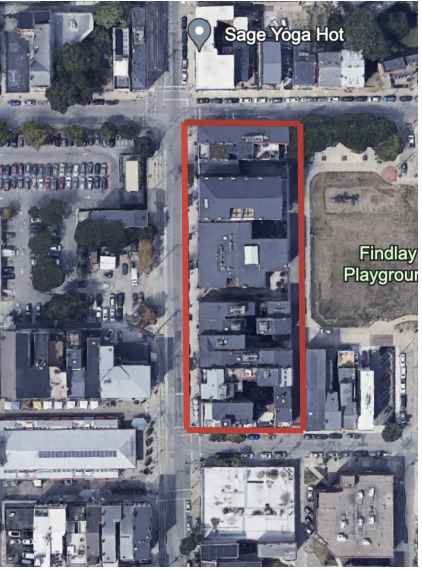
Via Google Earth.
Over-the-Rhine currently does a nice job of trying to prevent “bad” superblocks overall but we specifically chose this block because it represents what a “good” superblock should look like. It is very walkable, the flow of traffic is pretty contained, there’s no feeling of entrapment within the housing options, and there is a community playground/park that serves as greenspace for this city block.
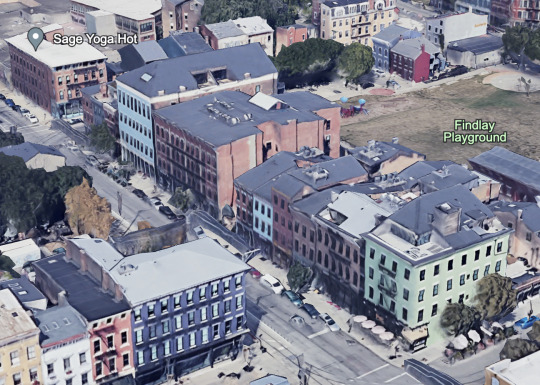
Via Google Earth.
Since this is a relatively small city block, It has around 20 units per acre. The Pedestrian orientated block size makes up for the lower number of units as pedestrians can easily navigate through and around the block. Furthermore, due to the proximity of the popular Findlay market, pedestrian foot traffic can be alleviated with the smaller city block. 2-3 stories of mixed-use space allow for the block to have a plethora of housing and retail options. The design of the buildings is aesthetically pleasing. The range of color, material, and composition makes the space feel authentic.

Via Google Earth.
0 notes
Text
RJ showcasing the AC Norm voicing on the Quilter Labs SuperBlock uK
Follow us:
Web: https://www.quilterlabs.com/
YouTube: https://www.youtube.com/@QuilterLabs101
Instagram: https://www.instagram.com/quilterlabs
Facebook: https://www.facebook.com/QuilterLabs
TikTok: https://www.tiktok.com/@quilterlabs
Twitter: https://twitter.com/QuilterLabs
Rumble: https://rumble.com/c/c-2852082
Users Group: https://www.facebook.com/groups/quilteramps
Neunaber Effects Group: https://www.facebook.com/groups/neunabertechnologies
#quilterlabs#amplifier#tone#pedalboard#guitarist#guitar#amp#pedalamp#superblock#UK#Top Boost#analog#solidstate#voicing#lightweight#AC30#AC15
0 notes
Text
youtube
BARCELONA SUPER BLOCKS
_ik
1 note
·
View note
Text
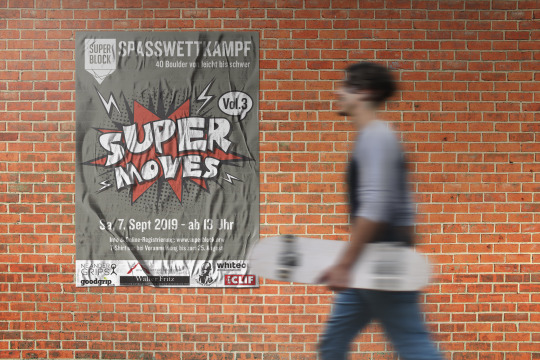
Each year there is a boulder contest in Düsseldorf, Germany called 'Supermoves'. I created a funny event logo, which the boulder store can use each year. This one is from 2019.
0 notes
Text
incorporating a new headcanon into our belief system: bugs in the bug fables setting continue molting their whole entire life like lobsters. the molted skeletons are very fragile but can be treated to make them tougher like leather, so it's not uncommon for bugs to turn their old skin into clothing or sell it
#bf#molted skeletons are a big ingredient in charms like def exchange and superblock+#and moth and bee skins are very useful for keeping warm in colder areas#of course it's also common for bugs to just eat the molts to regain energy after#so there's still a limited market for it
19 notes
·
View notes
Text
need a SUPERBLOCK button that blocks someone on all ur blogs at once
#text#they said they wont make a thing to block all of someones blogs which is stupid imo but whatever#but a superblock would be epic. like fuck man i gotta nuke this guy#Actually it should just be like that by default really
12 notes
·
View notes
Text
I arrive at a zoning debate but instead of arguing I just play a loop of the title audio from the game SUPERHOT, edited to say "SUPERBLOCK"
10 notes
·
View notes
Text
City of Longevity – the Barcelona Meet-up take away.

Along the Smart City Expo World Congress - attended by more than 25,000 people from 800 cities - we partnered with the Barcelona City Council on a special offsite event, the Barcelona Meetup, for some of the founder members of the City of Longevity global community, which was established at the inaugural City of Longevity conference in Newcastle in July 2023.
Purpose of the meet up was to update on the City of Longevity progresses and listen from the city delegates which are supporting the program, feedback, and insights. Moreover, our host, the City of Barcelona updated us on their strategic plan and the outcome of core interventions, with a special focus on the impact of Superilles (or superblocks) on longevity.

Here are our take aways:
Take away 1/ The format: we talk in the city, together with the citizens.
Thanks to the support of the Barcelona City Council, we were able to meet in the Sant Antoni market, in the heart of the city. Per our fashion, we tried to cancel the distance between 'stage' and 'audience' and trigger a discussion where we learn from dialogue. The subject of longevity is still hostage to cultural domains which struggle to see behavioural patterns, social circumstances, and environmental exposures as key determinants to healthy longevity. Where the meaning of “healthy” is strongly related to quality of life. It is time to put biology and post-codes on the same level. Ultimately, the City of Longevity must happen in the city also to take advantage, learn and breath the cultural canons of the host city.
Take away 2/ Why do we need a city of longevity? Because we have no choice.
Well told by Joachim Rautter/Berlin: According to the UN, the combination of maintaining a healthy weight, regular exercise, a healthy diet and not smoking can reduce the risk of developing the most common and deadly chronic diseases by as much as 80%. Both our lifespan and our healthspan—the period of time in which we’re not just alive but healthy and enjoying a good quality of life—are hugely influenced by our lifestyle. And lifestyles happens where we spend our lives. Cities are the engine to help citizens improving their lifestyles from the ground up added Sally Herbert/Newcastle.
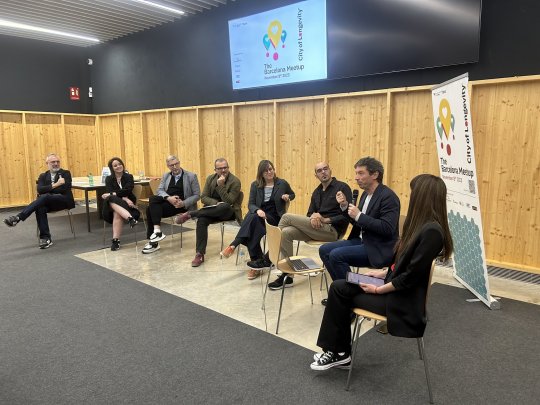
Take away 3/ Is urban planning a driver to healthy longevity?
The Sant Antoni Market is the epicentre of the Superilles (or superblocks), one of the urban redevelopment projects underway in Barcelona that are literally revolutionising the concept of public urban spaces, reconquering for the benefit of citizens what until a while ago seemed to be unbreakable axes of urban architecture: the streets, the crossroads, the pavements.
Much has already been said about Superilles, one of the first studies on their impact suggests that they can contribute to health through the reduction of both air and noise pollution, while a second study does not confirm whether this strategy can encourage people to be more active. However, it is too early to make an assessment. The Superilles still need to discount the 'sightseeing' effect and gradually become part of everyday life. Thanks to Ariadna Miquel Amengual/Barcelona enlightening presentation and to Daniel Alsina Torra/Barcelona guided tour of the superilles, these are our takeaways:
There is no need to (necessarily) build ad-hoc places or spaces, one can intelligently reinvent the existing. Which is great news for the cities of old Europe, and beyond.
Reinventing the existing with the person at the centre can stimulate relationships, encourage walkability, mitigate traffic, develop green and cooling areas, amplify sharing places, offer support and opportunities for rest, foster urban connectivity, reduce air and noise pollution. In our City of Longevity overview we defined the city as a discreet partner and the superilles are a tangible example of this idea.
Changing the architectural context of space drives behavioural change. Both of those who drive a car and those who walk alongside it. Pedestrian spaces can be created without criminalising cars and without creating ghettos for cyclists. Which is perhaps much more sustainable and feasible, in scale, than thinking of closing cities under a bell jar.
We have probably focused too much on the proximity of services. Proximity also and above all means human sharing, relationship, presence. And to stimulate this, the redesigning of space is decisive.

Take away 4/ There is (free) time ahead.
We spent a lot of energy talking about the 15 minutes instead of the 50Trillion Hours we have ahead of us. Collectively, that's 195 billion hours of leisure a year for those age 65+ and about 3.9 trillion hours over the next 20 years in the US only. If we consider this phenomenon across the developed and developing world, that's around 50 trillion hours of time affluence - and looking for fun, stimulating, nourishing, purposeful, even transformative, things to do.
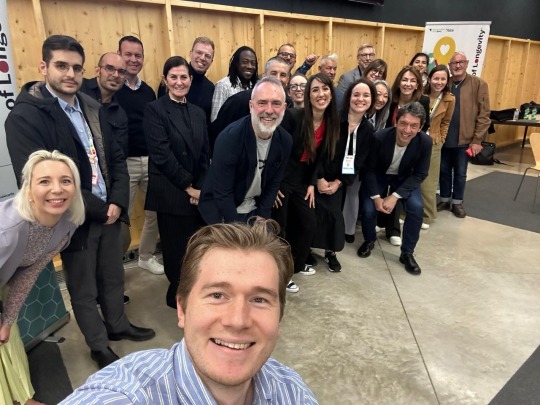
Takeaway 5/ Involving citizens is not only right, it is also possible.
The experiences of all the cities participating in the debate underlined how citizen involvement and participatory platforms are at the core of any possible discourse around the city of longevity. It seems obvious, but it is not. As professor Peter Madded said, "Almost none of the innovations on display at the adjacent Smart City World Expo Congress were citizen-driven, there is still a lot of rebalancing to be done". But when done correctly, the results are obvious, on the population and their healthy life expectancy.
Take away 6/ There is a need for relationship doctors
A cue suggested by Gianluca Galimberti/Cremona. Despite the endemic shortage of doctors, which we certainly need, there is perhaps a need to invent new professional figures, relationship doctors, relationship nurses, professionals capable of activating the relationship between citizens when architecture is not enough. A profession all the more necessary in the light of the integration of other cultures into our own.
Take away 7/ School is an engine for healthy longevity
As both Ariadna and Margarita Cejas/Buenos Aires emphasised, not only in relation to education, but also as a space/place for gathering and developing relationships, and for the importance of the role of children as actors/ambassadors of behavioural change in their families.
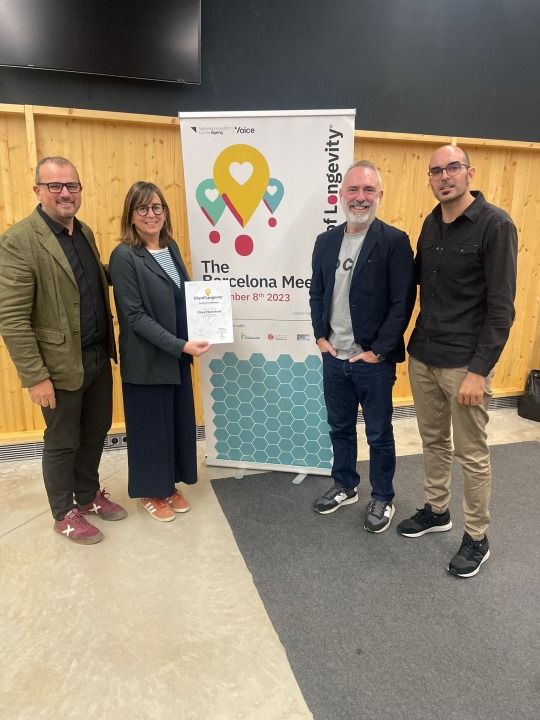

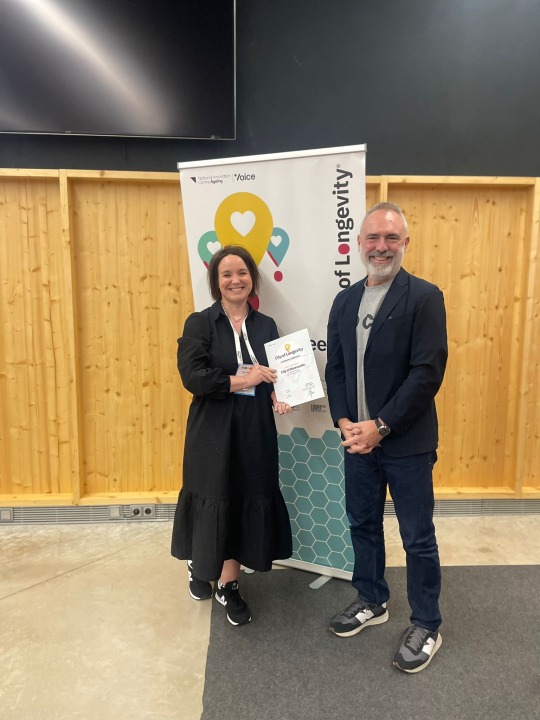
Take away 8/ Who pays for it?
An orchestrated longevity program needs a budget, and this budget comes from hybrid interactions between all the stakeholders. Interventions such as the Superilles have a return on investment, on society in the first place (and thus in the long run on a reduction in the cost of healthcare management) and on the economy. The local one, which benefits from the time/space offered by the recovery of the territory, and the global ones which - finally - can see the trillion-dollar promise of the longevity economy translated into a “where” it happens. Finally, there is the economy of data. It is time to engage citizens in a serious discussion about both how to make them owners of their own digital identity and how to let them decide how and whether to monetise it. A contract for which the city will have to act as intermediary, but which could revolutionise both the speed of development of innovation and its sustainability.
#cityoflongevity#dispatchesfromcol#behaviours#barcelona#cremona#newcastle#berlin#buenos aires#superilles#superblocks#event#delegatecities#builtenvironment#urbanplanning#lifestyle
0 notes
Text
RETOUR SUR LES SUPERBLOCKS BARCELONAIS : LA QUESTION DE LA SANTÉ ET PLUS ENCORE
On vous a déjà parlé des superblocks. Aujourd'hui , on va bous expliquer quelques conséquences de cette stratégie de réduction du nombre de véhicules dans un quartier. #moinsdevoitures #meilleuresanté
Temps de lecture : 15 minutes (avec la vidéo)mots-clés : Barcelona, superblocks, urban planning, santé, qualité de vie
Chers lecteurs,
En juin 2019, nous avions commencé à vous parler des superblocks de Barcelone (Avez-vous déjà entendu parler des superblocks de Barcelone ?). Il avait fait un carton plein de lecture avec plus de 550 lectures en 2021 et sur moins de 6 mois.
Cet article propose…

View On WordPress
0 notes
Photo

Bro 😭😭😭 y’all wanna know the misunderstanding? HE PUNCHED HIS MOTHER IN THE FACE 😩😩😩😩😭😭😭😂😂😂😂 IM DONE WITH ONLINE DATING Lmfaooooooooo SMH IMA JUST BE A NUN 🥴 #FolksCrazy #SUPERBLOCKED #AHTAHT #PRAYINGFORUFOLKZ #JesusHelpEm https://www.instagram.com/p/Cgibj00LafK/?igshid=NGJjMDIxMWI=
0 notes
Text
you should be able to pay 20 dollars to superblock people on this site where they lose like 200 followers too
289 notes
·
View notes
Text
there should be a superblock button where you never see the blocked person's posts ever. even if a mutual rbs it. even if their addition is a reblog. never ever
8 notes
·
View notes
Text
SuperBlock US - All Voice demo
For more info head to our site:
The SuperBlock US packs three vintage amplifiers into the most extensible system you can fit on your pedalboard. Featuring 57 Tweed, 61 Blonde, and 65 Blackface voicings, the SuperBlock US has all of your classic California amp needs covered. For the first time, we are excited to offer all of tonal secrets in a pedal format.
#quilterlabs#amplifier#guitarist#aviator#tone#effects pedals#overdrive#pedalboard#amp#guitar#superblock#tweed#blonde#blackface#fender#sweetwater
0 notes
Text
BARCELONA, Spain — In an effort to ease traffic congestion and curb greenhouse gas emissions causing climate change, municipalities from Barcelona to Brussels have embarked on what has been called a “transportation revolution.” Urban centers across the continent have adopted a host of innovative schemes designed to steer vehicles out of crowded downtowns, creating so-called 15-minute cities — where cars aren’t needed and services like banks, barbers, grocery stores and doctors are a short stroll or bike ride away.
But a fierce backlash has emerged in recent months against the restrictions and plans to all but rid cities of the bulk of their automobiles.
“There’s a new aggressiveness in some of the pushback we’re witnessing,” said Barbara Stoll, director of the Clean Cities Campaign, which works with municipal governments to reduce incoming traffic. “A lot of that opposition is from a very loud minority, largely composed of men who rely on the car, which has on multiple occasions escalated into physical violence and threats to public officials.”
In response to objections from business groups and political opponents, who have demanded that economic assessments be conducted prior to converting more neighborhoods to traffic-free zones, the Barcelona City Council in December froze in place its “superblock” program. A plan to keep cars out of one district in Berlin is also up in the air after candidates opposed to the idea fared well in last week’s elections in Germany.
In sprawling Brussels, where traffic-calming measures that are part of the city’s Good Move mobility plan have created construction quagmires, some politicians are voicing loud dissatisfaction, with one party, the hard-right Vlaams Belang, launching a sarcasm-laden campaign called No Move.
“The only thing that the Brussels government has managed to do is aggravate the traffic situation in our city, which was already disastrous,” the group says on its Facebook page.
David Leisterh, a member of Belgium’s Reform Party, told Yahoo News he now believes that the Good Move plan should go forward only if more than 50% of the city’s population supports it.
“I’m not against the idea,” Leisterh told Yahoo News about anti-congestion measures. “I’m against the way it’s been done so far.”
Claiming that the implementation of Good Move resulted in an 80% reduction in business, Christophe Durieux, who owned the upscale Brussels restaurant Le Rabassier, closed down the popular eatery late last year. “My customers tell me themselves, they will no longer come to my restaurant because it is too complicated,” Durieux told radio station BX1 in September. “It is becoming unbearable.”
Other downtown business owners have taken issue with Good Move. According to a poll conducted by the Neutral Union for the Self-Employed, two-thirds of small and medium-sized businesses in Brussels were considering moving due to the program. “This is a disaster for the vast majority of the self-employed and SMEs [small- and medium-sized enterprises],” the union told the Brussels Times in response to the survey. “If two-thirds of them already found traffic difficult before Good Move, more than 90% feel it is even worse now.”
Traffic barriers set up throughout Brussels have been vandalized and ripped out, and City Council meetings have turned increasingly testy, with protesters storming one recent meeting and making violent threats against the district councillor in charge of the mobility plan. At another meeting, a protest leader shocked attendees when she likened the plight of cars to Jews during the Holocaust.
“Are you planning to stick colored stars on our vehicles so that we can identify the ‘foreigners’ of the neighborhood ... the invaders, those who should be deported somewhere else?” asked Brussels resident Roxane Henry. “Someone had the same idea in the 1940s.”
In late October, demonstrations against Good Move turned violent with more attacks on traffic barriers. Seeking to control the crowd of roughly 100 demonstrators, several police officers were injured in the melee.
“Our will is to create social cohesion through dialogue and not confrontation,” Brussels City Councillor Vincent Vanhaleweyn, a supporter of Good Move, told Belga News Agency after the incident. “Our will is not to bury the project, but to bring together those for and against it in five months and find a solution for everyone.” Thus far, that hasn’t happened.
In several districts in Brussels, Good Move construction has not only stopped — it has reversed, with crews restoring streets to their original design, as planners go back to their drawing boards.
Even residents who support limiting traffic are ambivalent. “On the one hand, it’s good for the environment, and for reducing time spent in traffic jams — and the reduction of noise is good for residents,” said PR director Catherine Couplan. “But it’s bad for the residents living in streets where traffic is being redirected, and it’s bad for city shopkeepers, whose revenue is being severely impacted.” And while the idea of the city going greener is a long-term plan that Couplan supports, she said the everyday reality of the changes underway simply “creates chaos.”
“The protests seem to be the results of a combination of different factors,” said Stoll, pointing to issues from a “resistance to change” and “the current cost-of-living crisis” to feelings that low-income residents are being unfairly burdened by measures curtailing the use of cars.
In Oxford, England, problems started in late November, when county councillors approved a trial program to restrict traffic on six clogged arteries, a move that would help bolster the 15-minute-city concept. In 2024, officials plan to install traffic cameras and six “traffic filters” — boxes with signs on them informing motorists that traffic is restricted for private automobiles between 7 a.m. and 7 p.m. According to the council, the plan is meant to reduce private car traffic on busy streets during business hours; residents will be issued permits to allow them free passage, but nonresident vehicles that drive past filters will be subject to a 70-pound (about $85) fine during the restricted times. After the plan was announced, council members started receiving death threats.
“Staff and councillors have been subjected to abuse due to inaccurate information being circulated online,” Katariina Valkeinen, senior communications officer of the Oxfordshire County Council, told Yahoo News.
That “inaccurate information” began on Nov. 30 in an article by the independent British News outlet Vision News, with the headline “Oxfordshire County Council Pass Climate Lockdown 'trial' to Begin in 2024.” The article claimed the council planned to “lock residents into one of six zones” and keep them confined as part of a lockdown to fight global warming. And from there the fallacious rumors snowballed, portraying the 15-minute-city concept as akin to forced imprisonment in an effort to battle climate change.
In January, a group called Not Our Future began leafleting Oxford homes, warning locals that they were about to become guinea pigs. The group’s founder, David Fleming, was not from Oxford, but he did have a knack for stirring up anxiety. In 2020, he founded another group whose goal was the elimination of all COVID restrictions. A month after the leaflets appeared, several thousand demonstrators took to the streets to protest what they saw as the first steps in a climate lookdown.
14 notes
·
View notes
Text
3 notes
·
View notes
Text
i wish you could superblock people on here
3 notes
·
View notes